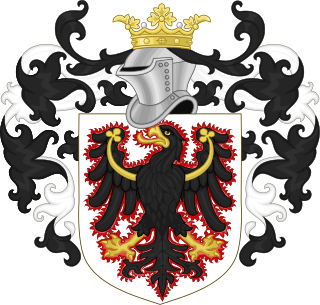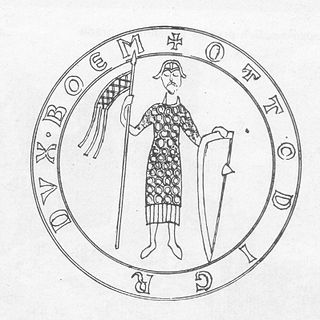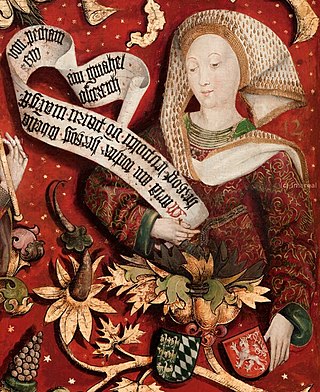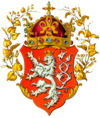
Ottokar I was Duke of Bohemia periodically beginning in 1192, then acquired the title of King of Bohemia, first in 1198 from Philip of Swabia, later in 1203 from Otto IV of Brunswick and in 1212 from Frederick II. He was an eminent member of the Přemyslid dynasty.

Wenceslaus I, called One-Eyed, was King of Bohemia from 1230 to 1253.

Boleslaus II the Pious, a member of the Přemyslid dynasty, was Duke of Bohemia from 972 until his death in 999.

Vladislaus Henry, a member of the Přemyslid dynasty, was elected Duke of Bohemia in 1197 and Margrave of Moravia from 1197 until his death. He only served as duke during the year 1197 and was indeed the last ruler of Bohemia to hold that title. It was his brother Ottokar I, whose forces overthrew him, who finally achieved the elevation of the Duchy of Bohemia to the status of a kingdom starting in 1198.

Henry Bretislav, a member of the Přemyslid dynasty, was Bishop of Prague from 1182, then Duke of Bohemia as "Bretislav III" from 1193 to his death.

Bretislav I, known as the "Bohemian Achilles", of the Přemyslid dynasty, was Duke of Bohemia from 1034 until his death in 1055.

The Přemyslid dynasty or House of Přemysl was a Bohemian royal dynasty that reigned in the Duchy of Bohemia and later Kingdom of Bohemia and Margraviate of Moravia, as well as in parts of Poland, Hungary and Austria.

Soběslav I was Duke of Bohemia from 1125 until his death in 1140. He was a member of the Přemyslid dynasty, the youngest son of Vratislaus II, by his third wife Świętosława of Poland.

Vladislaus II or Vladislav II was the Duke of Bohemia from 1140 and then King of Bohemia from 1158 until his abdication in 1173. He was the second Bohemian king after Vratislaus II, but in neither case was the royal title hereditary.

Conrad II Otto, a member of Přemyslid dynasty, was the first margrave of Moravia from 1182 to 1189 and duke of Bohemia from 1189 until his death.
Děpold I was the second son of Duke Vladislav I of Bohemia and brother of Duke and later King of Bohemia Vladislav II.
The history of Moravia, one of the Czech lands, is diverse and characterized by many periods of foreign governance.
Otto II, the Rich, a member of the House of Wettin, was Margrave of Meissen from 1156 until his death.
Richeza of Berg was Duchess of Bohemia from 1111 to 1117 and again from 1120 until 1125, by her marriage with the Přemyslid duke Vladislav I.

Maria of Bohemia, a member of the Přemyslid dynasty, was Margravine of Austria and Duchess of Bavaria by her first marriage to Duke Leopold I, as well as Margravine of Baden and Verona by her second marriage to Margrave Herman III.

Otto II the Black, a member of the Přemyslid dynasty, ruled as a Moravian prince in Olomouc from 1107 and in Brno from 1123 until his death.
Udalrich of Olomouc was Duke in Hradec Králové from 1152 till 1153 and between 1173–1177 ruled the appanage of Olomouc, one of three ducal regions in Moravia, then part of the Duchy of Bohemia.
Děpolt II, also known as Diepold II, was a Bohemian nobleman from the cadet branch of the Přemyslid dynasty and the leader of the Bohemian troop in the Third Crusade.

Luitpold of Znojmo was a Bohemian nobleman and a member of the Přemyslid dynasty who was the Duke of Znojmo in Moravia for twenty years, from 1092 until his death.

Conrad II of Znojmo, a member of the Přemyslid dynasty, was a Bohemian prince who ruled in the Moravian principality of Znojmo from 1123 to 1128 and again from 1134 until his death.















